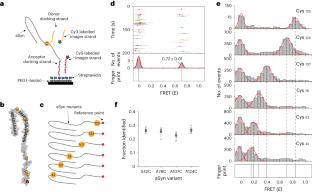2024-02-14 カーディフ大学
<関連情報>
- https://www.cardiff.ac.uk/news/view/2796188-targeting-inflammation-to-tackle-long-covid
- https://www.cell.com/med/fulltext/S2666-6340(24)00041-2
補体調節異常は長期COVIDの一般的かつ治療可能な特徴である Complement dysregulation is a prevalent and therapeutically amenable feature of long COVID
Kirsten Baillie ,Helen E. Davies ,Samuel B.K. Keat ,… David A. Price ,B. Paul Morgan ,Wioleta M. Zelek,
Med Published:February 14, 2024
DOI:https://doi.org/10.1016/j.medj.2024.01.011
Highlights
•Complement dysregulation is a hallmark of long COVID
•Complement biomarkers associate with the diagnosis of long COVID
•Complement inhibition is a potential therapy for long COVID
Context and significance
SARS-CoV-2 has left a global legacy of ill health, commonly known as long COVID. Although the causes of this new disease remain largely unknown, emerging evidence suggests an important role for chronic inflammation. In this study, researchers at Cardiff University show that overactivation of the complement system, a series of proinflammatory proteins circulating throughout the body, frequently associates with the clinical diagnosis of long COVID. The authors speculate that currently licensed inhibitors of complement activation could be repurposed to reduce systemic inflammation and counteract the associated illness in selected patients with long COVID.
Summary
Background
Long COVID encompasses a heterogeneous set of ongoing symptoms that affect many individuals after recovery from infection with SARS-CoV-2. The underlying biological mechanisms nonetheless remain obscure, precluding accurate diagnosis and effective intervention. Complement dysregulation is a hallmark of acute COVID-19 but has not been investigated as a potential determinant of long COVID.
Methods
We quantified a series of complement proteins, including markers of activation and regulation, in plasma samples from healthy convalescent individuals with a confirmed history of infection with SARS-CoV-2 and age/ethnicity/sex/infection/vaccine-matched patients with long COVID.
Findings
Markers of classical (C1s-C1INH complex), alternative (Ba, iC3b), and terminal pathway (C5a, TCC) activation were significantly elevated in patients with long COVID. These markers in combination had a receiver operating characteristic predictive power of 0.794. Other complement proteins and regulators were also quantitatively different between healthy convalescent individuals and patients with long COVID. Generalized linear modeling further revealed that a clinically tractable combination of just four of these markers, namely the activation fragments iC3b, TCC, Ba, and C5a, had a predictive power of 0.785.
Conclusions
These findings suggest that complement biomarkers could facilitate the diagnosis of long COVID and further suggest that currently available inhibitors of complement activation could be used to treat long COVID.
Funding
This work was funded by the National Institute for Health Research (COV-LT2-0041), the PolyBio Research Foundation, and the UK Dementia Research Institute.
Graphical abstract



